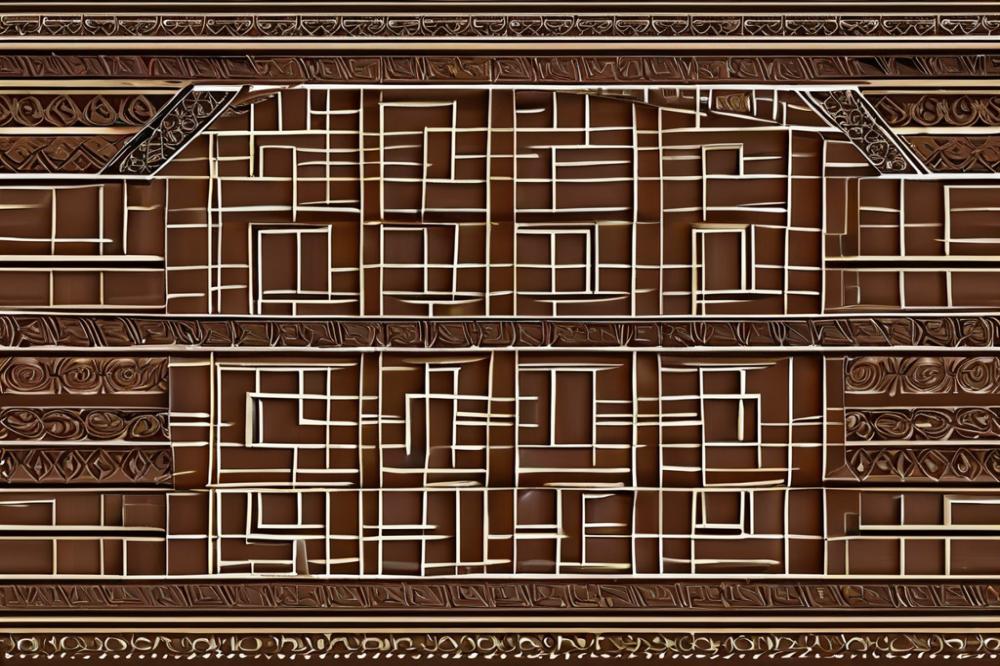Introduction
Greek desserts hold a special place in culinary traditions around the world. Many of these sweet treats showcase a wonderful mix of flavors, textures, and histories. Authentic recipes often use ingredients like honey, nuts, and pastries to create delights that are both rich and fulfilling. Among these beloved delights, chocolate options are perhaps the most enticing.
One standout is the Greek Sokolatina Cake, a delightful Chocolate Layer Cake. This dessert is not just another chocolate dessert; it embodies the spirit of Greek baking. Layers of cocoa-infused goodness come together, making it a preferred choice for celebrations and gatherings.
Traditional recipes play a vital role in Greek culture, connecting generations through shared tastes. Families often hold onto these cherished dessert recipes, passing them down as part of their heritage. In many homes, the act of baking is a way to celebrate not only the ingredients but also the time spent with loved ones.
What sets Sokolatina apart is its rich and velvety texture. The harmony of flavors draws people in, making each bite a memorable experience. This cake isn’t merely about sweetness; it tells a story of love and tradition in Greek cuisine, making it a truly special dessert.
The Essence of Greek Sokolatina Cake
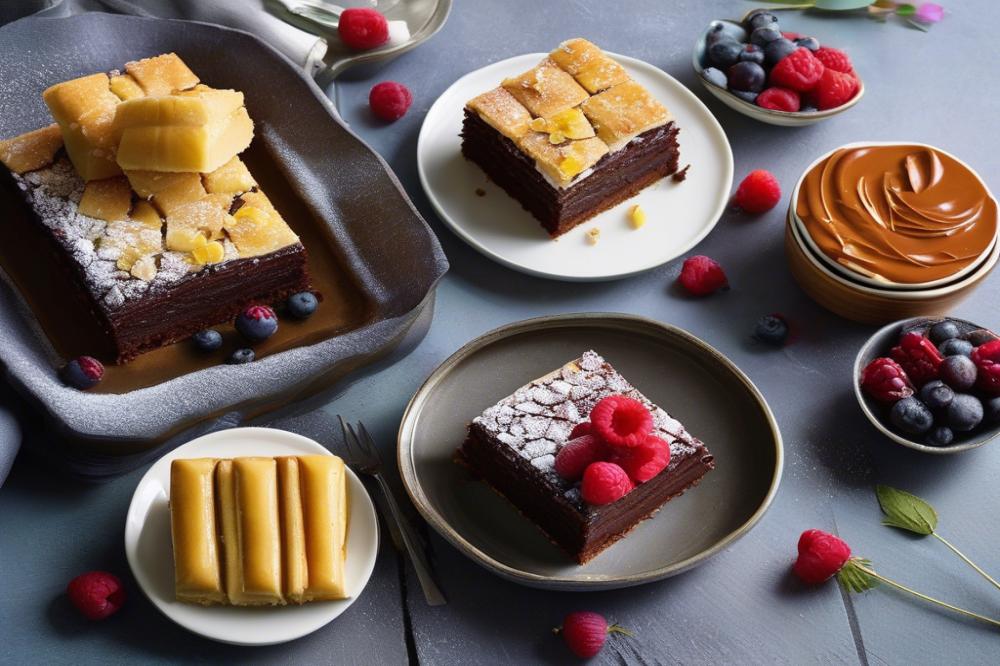
Sokolatina is a beloved classic among Greek desserts, often serving as a centerpiece of celebrations. This delicious chocolate cake embodies the rich tradition of baking found in Greece. It consists of layers filled with silky smooth chocolate, which creates an irresistible allure for dessert lovers.
In Greek cuisine, layering is an essential technique, especially in sweet treats. Cakes are often composed of multiple tiers that invite a delightful contrast of flavors and textures. The Sokolatina stands out with its decadent cocoa-infused layers that offer a chocolate experience like no other.
Historical roots run deep when it comes to Sokolatina. This dessert reflects various regional variations across Greece. Each community adds its flair, resulting in a diverse range of chocolate cake recipes. Some might infuse spices, while others emphasize richer cocoa blends. These adaptations showcase the local ingredients and culinary practices, making Sokolatina a dessert that tells a story.
Cocoa plays a significant role in traditional Greek dessert recipes. Its presence transforms basic ingredients into a luxurious experience. This powerful flavor elevates ordinary treats into something truly special. In many Greek households, baking isn’t just a task; it’s a cherished ritual, passed down through generations. The combination of cocoa with other flavors creates an inviting aroma that fills kitchens, bringing families together.
Ingredients and Cooking Instructions
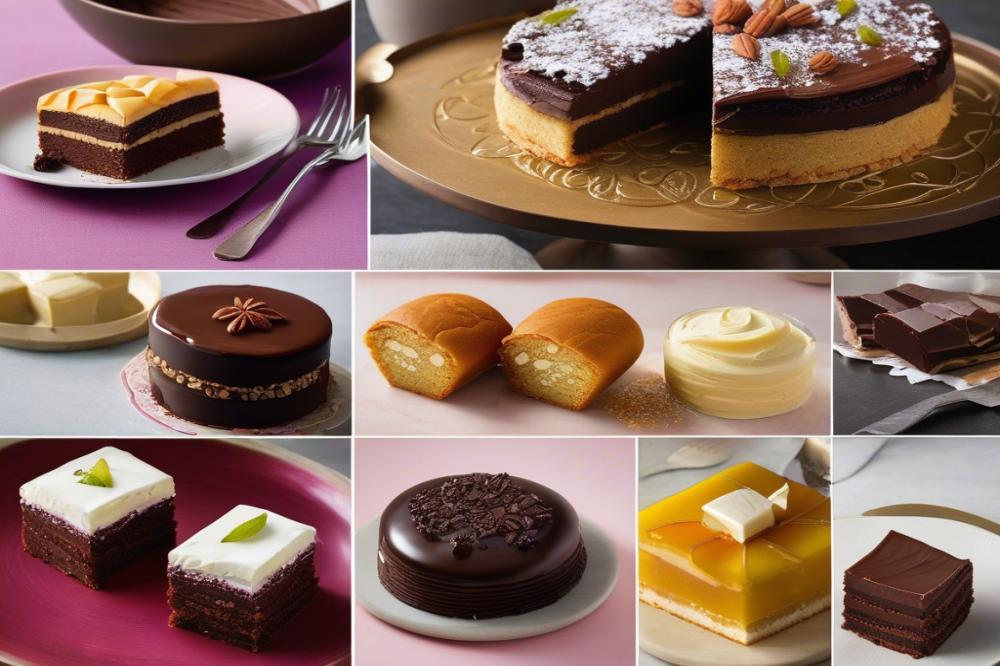
List of Ingredients with Measurements:
- 200g all-purpose flour
- 200g granulated sugar
- 100g unsweetened cocoa powder
- 150g unsalted butter
- 4 large eggs
- 500ml whole milk
- 1.5 tsp baking powder
- 1 tsp vanilla extract
- A pinch of salt
Cooking Instructions:
- Start by preheating the oven to 180°C.
- Next, prepare your cake pans. Grease them well to prevent sticking.
- In a bowl, mix together the dry ingredients: flour, sugar, cocoa powder, baking powder, and salt.
- Another bowl is for creaming the butter and sugar until fluffy. This adds air into the mix.
- Add in the eggs, one at a time. Mix thoroughly after each addition.
- Once combined, blend the wet and dry ingredients carefully. Pour in the milk and vanilla extract. Stir until smooth.
- Pour the batter evenly into the prepared pans. Bake for about 30-35 minutes or until a toothpick comes out clean.
- While the cakes bake, prepare your chocolate frosting. Layer it generously between the cakes once they are cool.
Nutritional Information per Ingredient:
- 200g all-purpose flour: Approx. 700 calories; carbs 150g, fat 2g, protein 20g. Contains B vitamins.
- 200g granulated sugar: Approx. 800 calories; carbs 200g. No significant vitamins or minerals.
- 100g unsweetened cocoa powder: Approx. 230 calories; carbs 66g, fat 12g, protein 24g. High in magnesium and iron.
- 150g unsalted butter: Approx. 1,070 calories; fat 115g, carbs 0g, protein 1g. Source of vitamin A.
- 4 large eggs: Approx. 280 calories; fat 20g, carbs 2g, protein 24g. Rich in B vitamins and iron.
- 500ml whole milk: Approx. 300 calories; fat 16g, carbs 24g, protein 16g. Contains calcium and vitamin D.
- 1.5 tsp baking powder: Negligible calories; primarily sodium and phosphorus for leavening.
- 1 tsp vanilla extract: Approx. 12 calories; minimal nutritional value, adds flavor.
- A pinch of salt: Provides sodium; negligible calories.
Baking Techniques for the Perfect Texture
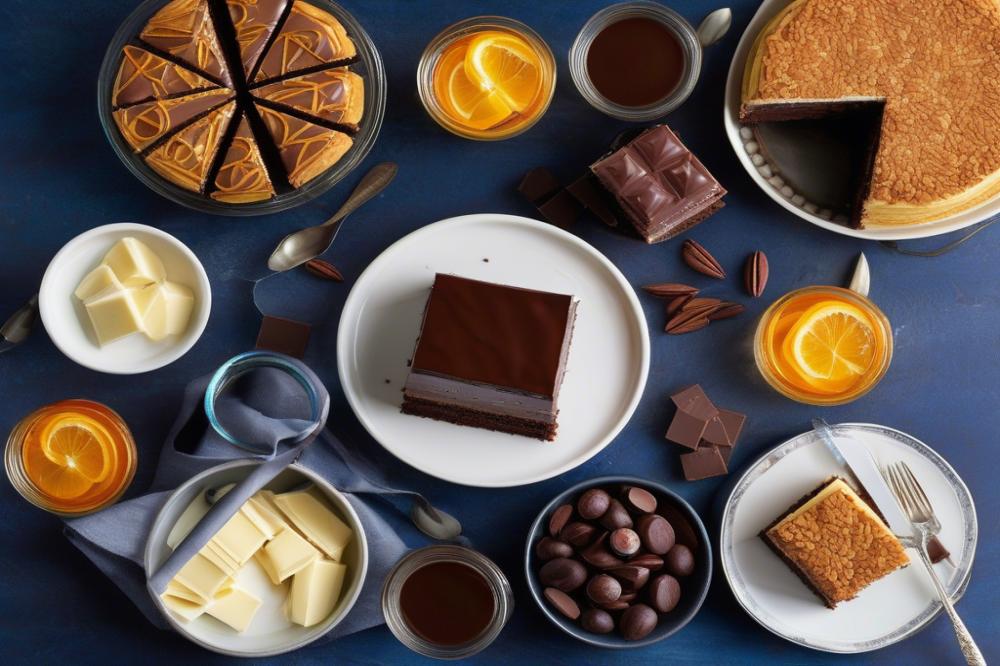
Ingredient quality plays a crucial role in baking. Using fine cocoa powder enhances the flavor of your Sokolatina. Fresh eggs provide better lift in your chocolate cake. Choose high-quality butter for a richer texture. These choices elevate traditional Greek dessert recipes and bring out the best in sweet treats.
Measuring and mixing are essential to achieve a balanced batter. Always use standard measurements for accuracy. A kitchen scale ensures precision, especially for dry ingredients. When mixing, begin at a low speed to avoid flour spills. Gradually increase to medium speed for a smooth blend. Be careful not to over-mix, as this can make your cake dense.
Baking Times and Temperature Considerations
Oven settings have a direct effect on the final product. Preheat your oven to the recommended temperature to create an even baking environment. Usually, a moderate temperature works best for chocolate cakes. Keep an eye on your baking times; they can vary based on your oven. Different sizes or pans can also affect how long your cake needs to bake.
How to Check for Doneness
Checking for doneness is vital to avoid undercooked or overbaked layers. A toothpick inserted into the center should come out clean. If it has batter clinging to it, give it more time. Observing the edges separating from the sides of the pan is another indicator. Listen for a slight spring when gently pressing the top of the cake.
Techniques for Layering and Frosting
Layering calls for patience and creativity. Allow each layer to cool completely before stacking them. This practice prevents melting frosting. Start with a thin layer of frosting between each cake layer. It adds flavor and keeps everything together. Be generous with the frosting on the sides and top of your cake for that classic look. Using a spatula makes this process easier, giving an even finish to your chocolate cake.
Serving and Presentation Ideas
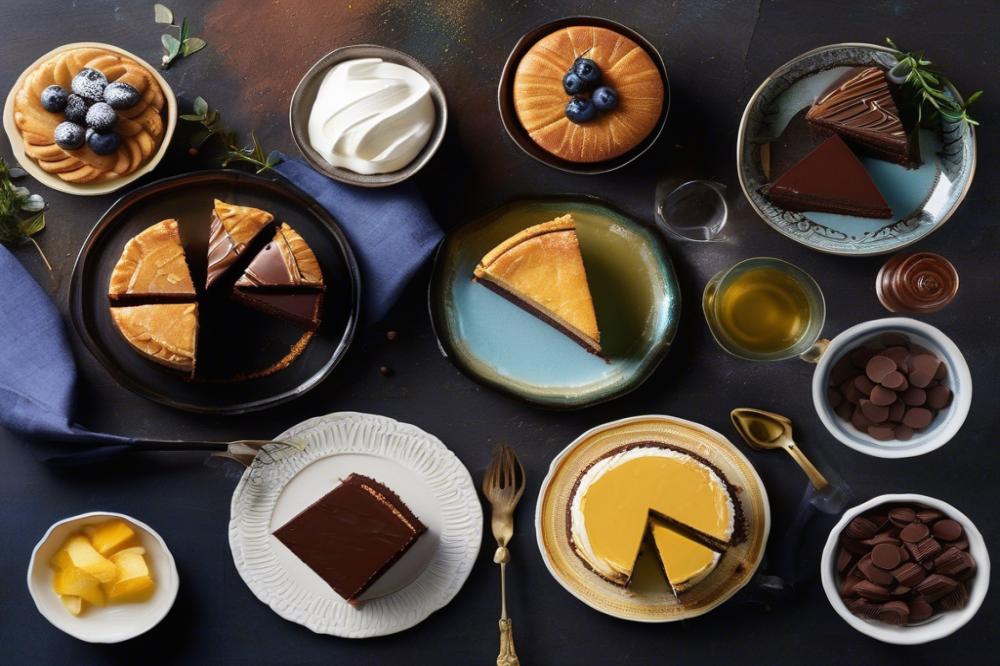
Traditional Ways to Serve Greek Sokolatina Cake
Serving Greek Sokolatina Cake is often a simple yet elegant affair. Slices are typically placed on dessert plates for enjoyment. Sometimes, powdered sugar dusting tops the cake, giving it a delicate look. Traditional Greek desserts are commonly served with fruit, like fresh berries or figs, adding flavor and color. Pairing a slice with a scoop of vanilla ice cream enhances the experience. This combination creates an inviting treat.
Creative Presentation Ideas to Enhance the Dessert
Presentation can elevate the appeal of any cake. To begin, consider using a fancy cake stand to showcase the layers. Arrange the slices in a fanned-out fashion for a nice touch. Adding edible flowers can also beautify the treat, making it well-suited for gatherings. Drizzling melted dark chocolate over the cake just before serving offers a gourmet look. These small details can surprise and delight your guests.
Pairing Suggestions with Greek Coffee or Tea
Pairing the cake with beverages brings a balance of flavors. Greek coffee, known for its rich taste, complements the sweet layers perfectly. Alternatively, a cup of herbal tea can provide a lighter contrast. For those who enjoy flavored drinks, consider a Greek mountain tea infused with lemon. This selection of drinks enhances the overall dessert experience.
Ideal Occasions for Serving Sokolatina
Greek Sokolatina Cake shines during special celebrations. Birthdays and anniversaries often call for indulgent desserts. Serving this chocolate cake at holiday gatherings brings warmth and joy. Family reunions and potlucks also create a perfect opportunity. This dessert often becomes a favorite among friends and loved ones. Given its rich flavors, it’s equally great for casual get-togethers.
Exploring More Greek Dessert Recipes
Greek cuisine is rich in sweet offerings. Many classic treats stand out, from luscious baklava to creamy galaktoboureko. These dessert recipes often feature ingredients like nuts, honey, and phyllo pastry. Each bite tells a tale of tradition and culture. Exploring these treats is like taking a sweet journey through time.
Sokolatina, or Chocolate Layer Cake, fits nicely within this diverse world of Greek sweets. Its rich layers of cocoa chocolate create a delightful experience. While it represents modern adaptations, traditional Greek sweets focus on simpler flavors and textures. The blend of these elements highlights the evolution of Greek desserts.
For those looking to add a twist, new flavors and variations are just a recipe away. Consider infusing chocolate cake layers with a hint of orange zest or adding a layer of coffee. These small changes can elevate the dessert while keeping its essence intact. Experimenting with ingredients can yield exciting results, making each occasion special.
Diversity in baking is a hallmark of Greek dessert creation. Each region has its specialties, reflecting local ingredients and traditions. Some people love trying different sweet treats from various parts of Greece. They might savor dips of yogurt with honey or taste the velvety richness of a chocolate mousse. Exploring these options makes for a delightful culinary adventure.
As you delve into the world of Greek baking, remember that there is plenty to discover. Each recipe has its own charm and story. So why not try making your own desserts? You may just find a new favorite sweet treat to enjoy.
Final Thoughts on Greek Sokolatina Chocolate Layer Cake
The Greek Sokolatina Cake holds a special place in the world of desserts. Its rich history and delightful flavors reflect the heart of Greek culinary tradition. This cake is more than just a treat; it symbolizes the joy of gathering, sharing, and celebrating. Many families pass down their recipes through generations, each adding their own twist. These variations highlight how personal this dessert can be.
Trying this recipe can be a rewarding experience. Baking it at home allows one to appreciate the methods and ingredients used in authentic Greek desserts. Each slice reveals layers of love and history. Don’t hesitate to experiment with flavors or decorations. Adding fruits, nuts, or different types of chocolate can elevate the experience.
Preserving traditional dessert recipes like this is essential. They provide a window into the culture and customs of Greece. As the world changes, keeping these flavors alive is vital for future generations. Understanding where our desserts come from enriches our appreciation for them.
We invite you to share your experiences or any creative variations of the recipe. Did you try a different filling or garnish? Your insights can inspire others to embark on their baking adventure. Let’s keep this delightful tradition flourishing.

